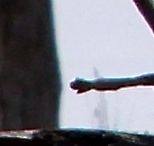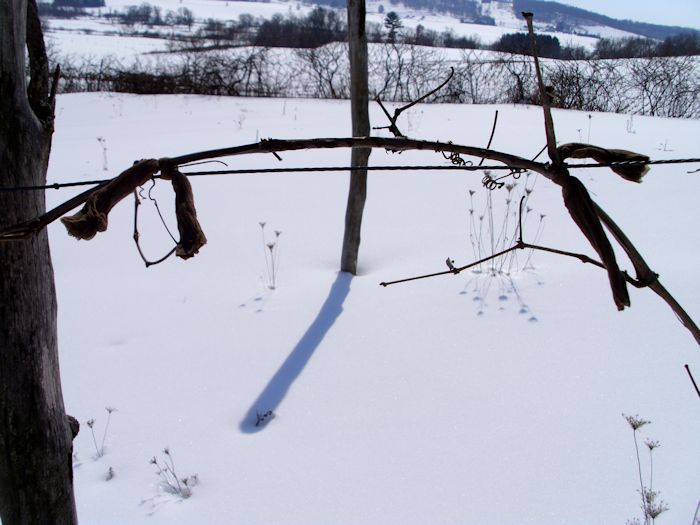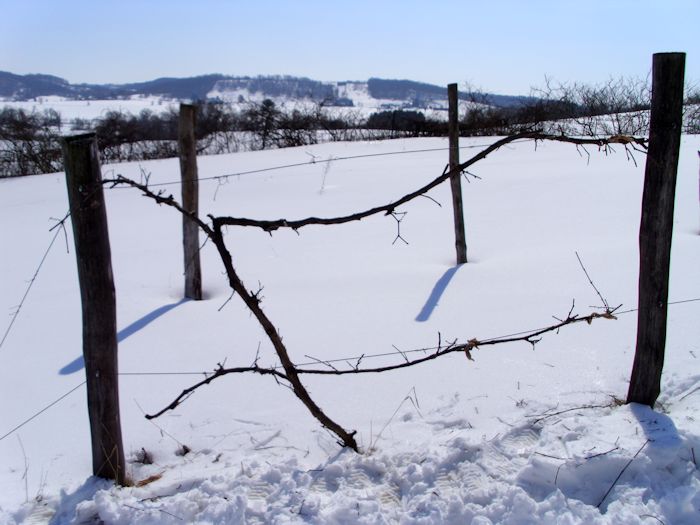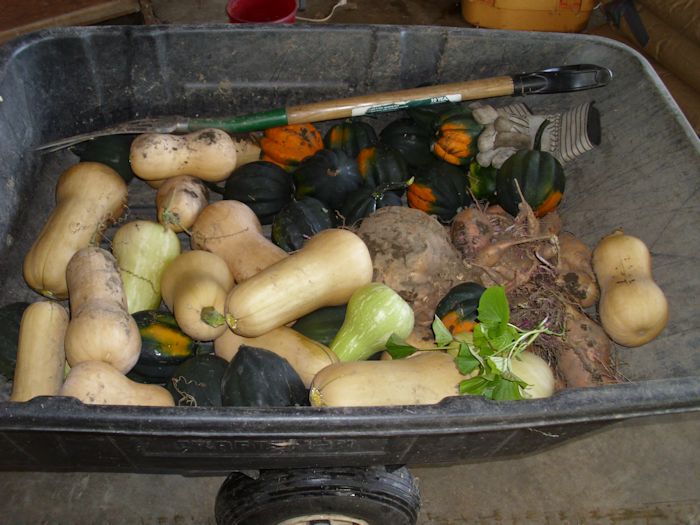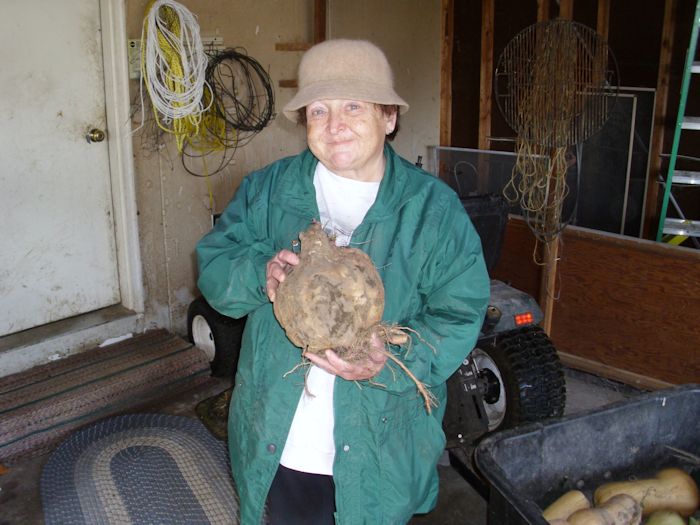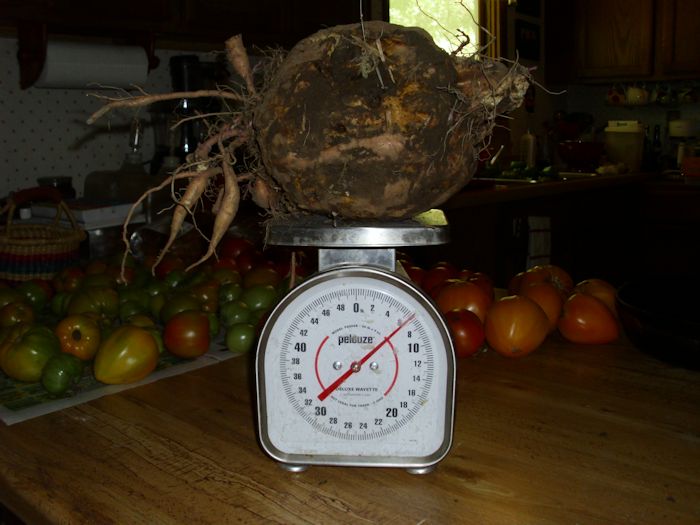I have spoken a few times about our grapes (see Pruning the Grapes (Part 1) and Pruning the Grapes (Part 2) for details). A few people have asked for details about our four-cane Kniffin system setup. You can see some pictures of the setup in my posts and there is line art available that shows the setup various places online. However, most posts don’t provide details about the actual construction of the setup.
In my case, I used seven large black locust posts cut from trees my grandfather planted. I debarked the logs using a draw knife and then let them dry for a year before putting them into the ground. Black locust is naturally rot resistant and incredibly hard—even the woodpeckers don’t like it. However, carpenter ants will infest your logs given the chance, but even in this case, they hollow out the center and leave the outside intact. So far, I haven’t encountered a problem with carpenter ants because the grape fence is located far enough away from the woods. Because the posts I’ve used are so strong, I didn’t add the angled end posts shown in a lot of illustrations of grape fences. If you were to buy your posts from a lumber hard, you’d want sturdy 4″ diameter or larger posts. Each post is 9′ long and you bury 3′ of the post in the ground.
The cabling is 1/8-inch galvanized wire rope. You want to use wire rope because it’s made up of many small wire fibers and is quite flexible—making it easier to work with. This size cabling will support six to ten canes without any problem. Make sure you read about the weight capacity of the cabling. Each cable must be able to support a minimum of 50 pounds per cane per cable. So, if you have six canes in a row, the cable must be able to support at least 300 pounds (more is better). Otherwise, you have the risk of the cable breaking as the fruit ripens.
You’ll need some method of clamping the cabling. The method for attaching the cable to the earth anchors and turnbuckles is to create a loop and then clamp the loop. Some people will try to use crimping sleeves because they’re easy to work with and inexpensive. This solution works fine for fencing, but not for grapes. As your setup flexes and breaks into the task of supporting the grapes, you’ll need to make adjustments and tighten the cables. For this reason, you want to use wire rope cable clip clamps instead. I’ve found that the 3/16″ or 1/4″ sizes work best for the cabling used on my setup.
Two turnbuckles help tighten the cables. One turnbuckle for the upper wire and one for the lower wire. The turnbuckles make it possible to make small tightening adjustments as the season progresses (you normally make major adjustments in spring, before the canes become active). You want to keep the cables as tight as possible to help support the canes properly. I prefer a 5/16″ × 9 turnbuckle because it provides enough adjustment potential in most cases. Make sure the turnbuckles you choose can support the weight of the wire rope and canes.
The wire rope is ultimately supported by two earth anchors—one at each end. Both rope wires can go to the same earth anchor. It’s a mistake to assume that you can use a short earth anchor because it will pull out over time. In order to ensure that your setup will remain sturdy, you need a large earth anchor. My setup uses 6 × 48″ earth anchors with attached auger for maximum strength.
An earth anchor the size of the one discussed in this post requires a fair amount of muscle to put into the ground. I highly recommend having a piece of metal pipe to use to help get the anchor into the ground. My piece of pipe is about 30″ long. You put the pipe through the eye in the earth anchor and use it to turn the earth anchor as it goes down into the ground.
The final piece of the puzzle are the screw eyes used to hold the cable at each post. The screw eyes are attached at heights of 30″ and 60″ on my setup. Each screw eye must be able to support the weight of all of the canes and the wire rope. A 2-1/16″ screw eye (size 104) will probably work, but I prefer a larger 3″ screw eye to ensure it will hold up.
This is all that you need to setup a grape fence of the type I use. There are ways to make the fence using other materials and I’m not saying my method is the only method available, but it has worked well over the years we’ve had grapes. Let me know your thoughts on grape fence construction at [email protected].

